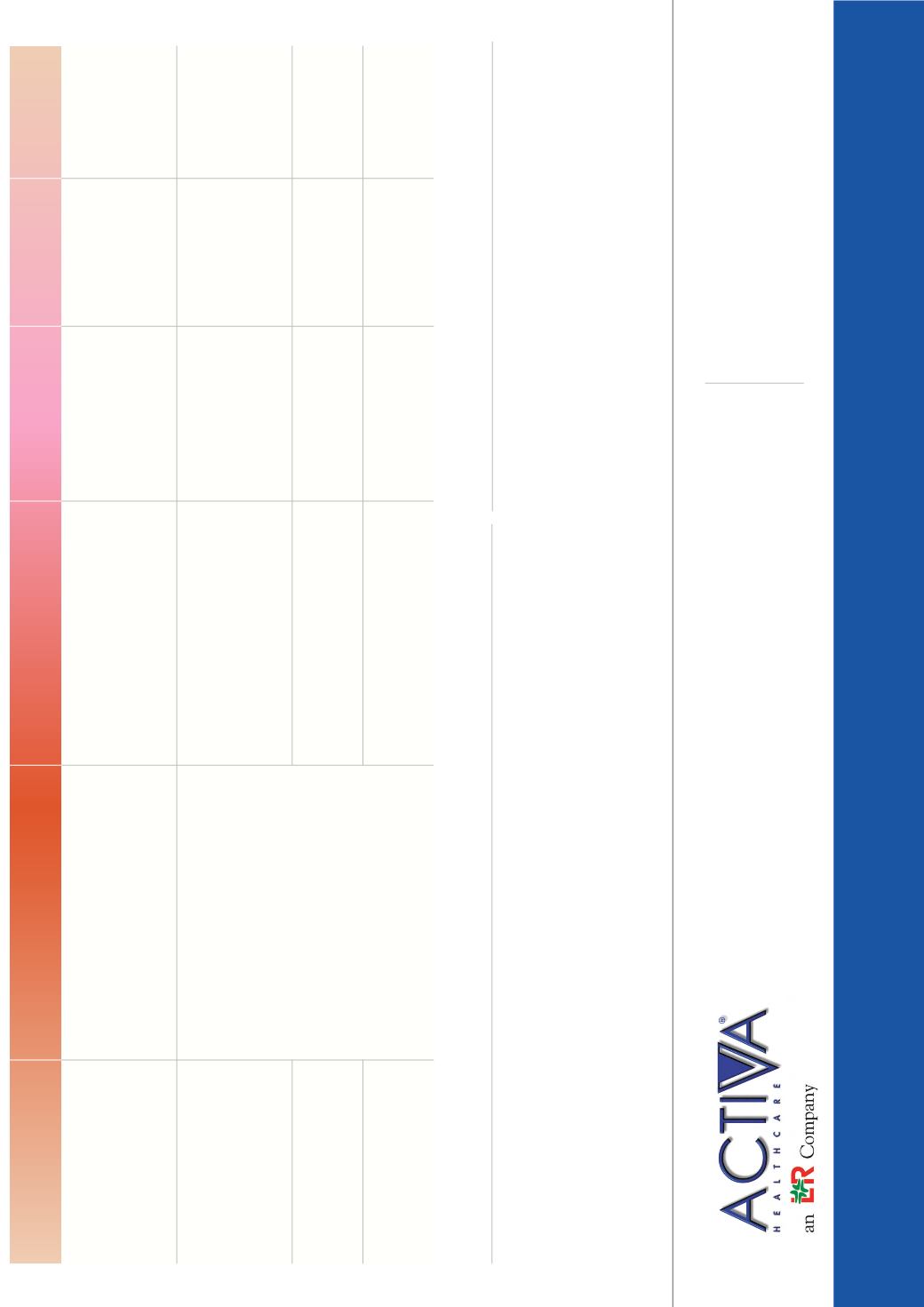
An ideal compression system
3
›
A clinically and cost-effective, evidence-based treatment
›
Provides sustained pressure for one week or more
›
Enhances calf muscle function
›
Adaptable to a range of limb sizes and shapes
›
Easy to apply
›
Conformable and comfortable (non-slip)
›
Non-allergenic
This document is a guide only and does not diminish the requirement to exercise clinical judgement and follow local policy. The publishers and Activa Healthcare cannot accept
responsibility for the use of this information in clinical practice.
Indications
Limb
measurement
Patient’s mobility Positve effects on
patient’s mobility Self-care
Leg ulcer hosiery kit. The
garment delivers adequate
compression for healing
(average 40mmHg)
More than 0.8 and less than 1.3 ABPI —
apply hosiery kit
Less than 0.8 and more than 1.3 — hosiery
kits used only after specialist referral/under
strict supervision
Ankle, foot and calf measurements in
accordance with manufacturer’s
measuring charts
Suitable for patients
with ability/dexterity to
apply/remove hosiery.
Application aids available
Excellent
Yes
Application aids
can also be used
to aid donning/
doffing
VLU compression
bandage kits (or two-
component kits):
•
Inelastic
•
Elastic
If the ABPI is 0.8 — 1.3 compression
bandages can be applied
If the ABPI is >1.3 further investigation may
be required before compression bandages
can be applied (seek specialist guidance)
Precautions — compression bandaging should
be used with caution/specialist guidance in the
following conditions: VLU with arterial disease;
VLU with diabetic foot ischaemia; VLU with
cardiac failure
18–25cm/25cm–32cm (larger sizes
may be available)
Suitable for all patients
Good
Yes/No
Application and
removal education
needed
Inelastic cohesive
compression bandaging
system
Ankle circumference above 18cm
Flexible systems to fit different size
and shape limbs
Suitable for all patients Good
Yes/No
Education needed
to use
Four-component elastic
compression bandaging
systems (3–4 layer)
18–25cm/25–32cm (larger sizes may be
available). System can fit larger sizes
and different-shaped limbs
Suitable for all patients
Poor
No
1. Dowsett C (2011)
Wounds UK
7(1):
115–19
2. Ashby RL, et al (2013)
Lancet
383(9920):
871–93
3. Marston W,Vowden K (2003) In:
EWMA
Position Document. Understanding Compression
Therapy
. London: MEP Ltd
When is it time to reassess compression choice?
›
Each dressing/bandage change requires reassessment. A change in wound healing status,
oedema, ABPI, skin, mobility and comorbidities may require change to compression
therapy, e.g. on healed wound, hosiery can be used for maintenance.
›
There is now greater choice in compression therapies, with more fabrics, sizes and colours
available. This has improved concordance, which helps to prevent recurrence
1
.
›
Recent evidence has shown that two-layer hosiery kits are as effective as four-layer
bandaging for healing venous leg ulcers — and linked to reduced recurrence after healing
2
.
sponsored by


